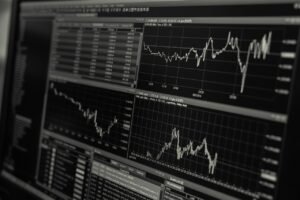Though the terms trading and investing are sometimes used interchangeably, they are actually two very different concepts in the context of capital markets, especially in the foreign exchange market. Both traders and investors seek to profit in various financial markets, but their methods and styles differ significantly. Let’s delve into these differences to help you decide which path suits you best.
Trading: Active and Fast-Paced
Definition and Goals
- Active Engagement: Trading involves the frequent buying and selling of financial instruments such as currency pairs or commodities.
- Short-Term Profit: The goal is to earn a profit through rapid transactions, aiming for better returns than traditional long-term investing.
- Quick Returns: Traders focus on achieving significant monthly or even weekly returns, often as much as ten percent or more.
Process and Strategies
- Market Monitoring: Trading requires close, active monitoring of the market to quickly identify and capitalize on buying and selling opportunities.
- Short Time Frames: Traders aim to buy low and sell high within short periods, or use short selling to profit from falling markets.
- Automated Tools: They often use automated orders like stop losses to manage risks and secure profits.
Analysis Techniques
- Technical Analysis: Traders primarily rely on technical analysis, using tools such as moving averages to identify good trading opportunities.
- Rapid Decision-Making: The fast-paced nature of trading demands quick decision-making and constant vigilance.
Investing: Slow and Steady
Definition and Goals
- Long-Term Growth: Investing involves buying and holding financial instruments to generate profits over longer periods.
- Steady Returns: Investors aim for slow, steady growth, often reinvesting dividends and interest to compound returns over time.
- Diversified Portfolios: Investments typically include a mix of stocks, bonds, and mutual funds to spread risk.
Process and Strategies
- Long Time Frames: Investments are usually held for years, even decades, allowing investors to ride out market fluctuations.
- Patience and Stability: Investors can afford to be patient, benefiting from interest, dividends, and the compounding of returns.
- Strategic Positions: Famous investors like Warren Buffet have demonstrated the success of long-term holding strategies.
Analysis Techniques
- Fundamental Analysis: Investors focus on fundamental analysis, assessing the intrinsic value of assets and their future potential.
- Value Identification: They look for undervalued assets that are expected to appreciate over time.
Trading vs. Investing: The Bottom Line
Time and Participation
- Active vs. Passive: The primary difference between trading and investing is the level of active participation and the time frame.
- Daily Activity: Traders are actively involved in the market daily, sometimes making trading their full-time job.
- Long-Term Vision: Investors seek larger returns over a long period, using a buy-and-hold strategy.
Market Behavior
- Profit from Volatility: Traders can profit in both rising and falling markets through frequent transactions.
- Ride Out Fluctuations: Investors remain steadfast during market fluctuations, relying on the long-term potential of their investments.
Getting Started: Which Path is Right for You?
For Aspiring Traders
- Demo Accounts: If you’re interested in trading, consider opening a free demo account. Practice trading currencies, popular commodities, global indices, and precious metals with $10,000 in virtual money.
- Learn and Experiment: Use the demo account to learn the ropes, experiment with different strategies, and understand the market dynamics.
For Future Investors
- Long-Term Planning: If investing suits you better, start by planning your long-term financial goals.
- Diversify Your Portfolio: Focus on building a diversified portfolio that includes a mix of assets to spread risk and ensure steady growth over time.
Understanding the fundamental differences between trading and investing is crucial for anyone entering the financial markets. Your choice will depend on your financial goals, time commitment, and risk tolerance. Whether you choose the fast-paced world of trading or the steady path of investing, both avenues offer unique opportunities for profit.




